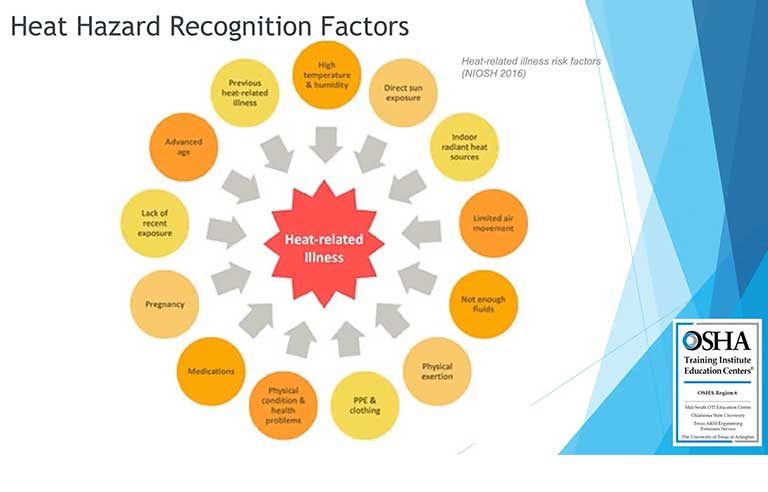OSHA hosts webinar on preventing heat-related illnesses, injuries

Washington — To prevent illnesses and injuries related to environmental heat exposure, employers need to “think about preventing injuries and providing workers with the right equipment for the job,” a May 19 webinar hosted by OSHA advises.
“Millions of U.S. workers are exposed to heat in the workplace, and although heat-related illness is preventable, each year thousands of workers are getting sick from their exposure to heat, and … some cases are fatal,” Stephen Boyd, deputy regional administrator for OSHA Region 6, said during the presentation.
The agency notes that operations involving high air temperatures, radiant heat sources, high humidity, direct physical contact with hot objects and strenuous physical activity carry high potential for causing work-related heat stress. OSHA cites numerous industrial occupations and locations in which problems may occur. Among outdoor workers, examples include construction, refining, asbestos removal, hazardous waste site activities and emergency response operations – especially those requiring workers to wear semipermeable or permeable protective clothing.
Sites of potentially hazardous indoor operations include foundries, brick firing and ceramic plants, glass product facilities, rubber product factories, electrical utilities (particularly boiler rooms), bakeries, confectionaries, commercial kitchens, laundries, food canneries, chemical plants, mining sites, smelters, and steam tunnels.
According to the Bureau of Labor Statistics, heat illnesses caused 49 worker deaths in 2018 – a 53.1% increase from the previous year. That same year, 3,950 workers experienced days away from work as a result of nonfatal injuries and illnesses from occupational heat exposure.
The webinar explores strategies for heat hazard recognition, as well as planning and supervision, engineering controls and work practices, training, and resources.
OSHA recommends having all new or returning workers acclimatized to environmental heat conditions by first working shorter shifts before building up to larger ones. Additionally, these workers should gradually increase their workloads while taking more frequent breaks at the start.
OSHA offers employer and worker resources for working in hot weather through its Water. Rest. Shade. campaign.
“Water, rest, shade: These will mean the difference between life and death,” OSHA states during the webinar.
Agency tips to help prevent heat-related illnesses:
- Drink water every 15 minutes.
- Take rest breaks in the shade to cool down.
- Wear a hat and light-colored clothing.
- Monitor co-workers for symptoms of heat-related illnesses.
Other agency efforts to mitigate heat-related illnesses and fatalities include a Heat Safety Tool – a free mobile app designed in collaboration with NIOSH.
Post a comment to this article
Safety+Health welcomes comments that promote respectful dialogue. Please stay on topic. Comments that contain personal attacks, profanity or abusive language – or those aggressively promoting products or services – will be removed. We reserve the right to determine which comments violate our comment policy. (Anonymous comments are welcome; merely skip the “name” field in the comment box. An email address is required but will not be included with your comment.)

